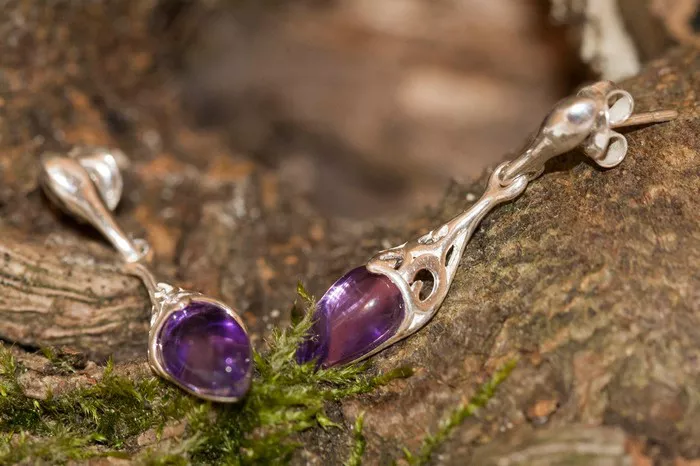Amethyst is a variety of quartz, a mineral that is relatively stable in many environments. However, when it comes to water, there are certain considerations. Quartz in general is not highly reactive with water under normal conditions, but the situation can be more complex when it comes to amethyst, especially considering potential impurities and the long – term effects.
Short – Term Effects
Physical Appearance
In the short – term, placing amethyst in water may not cause immediate and obvious visible changes in most cases. Since amethyst has a relatively hard Mohs hardness of about 7, water alone is not likely to scratch or abrade its surface. The crystal structure of amethyst, which is trigonal in quartz, is not easily disrupted by simple contact with water. However, if the amethyst has any pre – existing fractures or inclusions, water may seep into these small spaces. This can sometimes give the appearance of a slightly different luster in the areas where water has entered, but it is a very subtle effect.
Chemical Reactions
Chemically, there is no significant reaction between pure water and amethyst in the short – term. Amethyst is mainly composed of silicon dioxide (SiO₂), and water does not readily react with this compound at normal temperatures and pressures. However, if the water contains dissolved substances such as acids or salts, the situation can change. For example, if the water has a small amount of hydrochloric acid (HCl), even in a very dilute form, it may start to slowly dissolve some of the impurities in the amethyst or potentially affect the surface of the stone over time. But in pure water, no such chemical reactions occur initially.
Long – Term Effects
Dissolution of Impurities
Over the long – term, if amethyst is constantly exposed to water, especially water with a certain chemical composition, the dissolution of impurities can become more significant. Amethyst may contain small amounts of other minerals or elements as impurities. For example, the iron that gives amethyst its purple color can be affected. If water is slightly acidic, it may start to slowly leach out some of the iron or other trace elements. This can potentially lead to a change in the color of the amethyst over a very long period. The color may become lighter or more faded as the impurities that contribute to the color are removed.
Cracking and Damage
Another long – term effect of water exposure is the potential for cracking. If water seeps into the small fractures or inclusions in the amethyst and then freezes, it can cause significant damage. When water freezes, it expands, and this expansion can exert pressure on the crystal structure. Since amethyst is a brittle mineral, this pressure can lead to the formation of new cracks or the widening of existing ones. Over time, repeated cycles of water infiltration and freezing can cause the amethyst to break apart or at least become severely damaged.
Growth of Microorganisms
In some cases, if the water contains microorganisms, they may start to grow on the surface of the amethyst. This is more likely to happen in water that is not pure, such as stagnant water. Microorganisms can attach themselves to the surface of the stone and form a biofilm. This biofilm can potentially affect the appearance of the amethyst, giving it a dull or slimy look. Moreover, the metabolic by – products of these microorganisms may also interact with the amethyst over time, potentially causing chemical changes on the surface.
Impact on Jewelry – Making and Value
Jewelry Integrity
For amethyst used in jewelry, water exposure can have implications for the integrity of the piece. If an amethyst in a ring or necklace is exposed to water frequently, and the water causes cracking or damage as described above, it can lead to the loss of the gemstone or at least make the piece look less appealing. The setting of the amethyst in the jewelry may also be affected. For example, if water seeps into the space between the amethyst and the metal setting, it can cause corrosion of the metal or loosening of the setting over time.
Value Considerations
The value of amethyst can be affected by water – related damage. A high – quality amethyst with good color and clarity that has been damaged by water exposure will be worth less than an undamaged specimen. In the case of antique or rare amethyst jewelry, water – induced damage can significantly reduce its historical and monetary value. Collectors and appraisers take into account the condition of the amethyst, and any signs of water damage are a negative factor when assessing the value.
Conclusion
While amethyst may seem relatively stable in water in the short – term, long – term exposure can lead to various effects such as impurity dissolution, cracking, microorganism growth, and these in turn can impact the appearance, integrity, and value of the amethyst, especially when it is used in jewelry. It is important to be aware of these potential consequences when handling and storing amethyst.
Related topic:
- The Charms of Amethyst and Fluorite
- The Mystical Charm of Amethyst and Black Obsidian
- What is Amethyst Used for in Jewelry?


